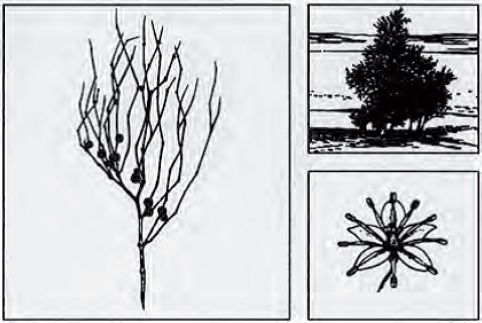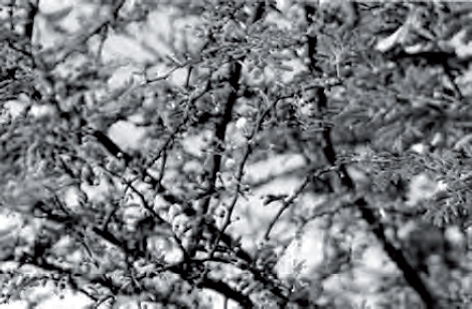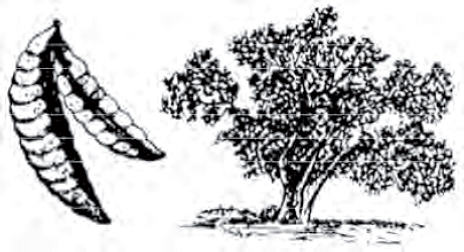You can eat many grains and seeds raw until they mature. When hard or dry, you may have to boil or grind them into meal or flour.
The sap from many trees, such as maples, birches, walnuts, and sycamores, contains sugar. You may boil these saps down to a syrup for sweetening. It takes about 35 liters of maple sap to make one liter of maple syrup!
PLANTS FOR MEDICINE
In a survival situation you will have to use what is available. In using plants and other natural remedies, positive identification of the plants involved is as critical as in using them for food. Proper use of these plants is equally important.
Terms and Definitions
• The following terms, and their definitions, are associated with medicinal plant use: Poultice. The name given to crushed leaves or other plant parts, possibly heated, that you apply to a wound or sore either directly or wrapped in cloth or paper.
• Infusion or tisane or tea. The preparation of medicinal herbs for internal or external application. You place a small quantity of a herb in a container, pour hot water over it, and let it steep (covered or uncovered) before use.
• Decoction. The extract of a boiled down or simmered herb leaf or root. You add herb leaf or root to water. You bring them to a sustained boil or simmer to draw their chemicals into the water. The average ratio is about 28 to 56 grams (1 to 2 ounces) of herb to 0.5 liter of water.
• Expressed juice. Liquids or saps squeezed from plant material and either applied to the wound or made into another medicine.
Many natural remedies work slower than the medicines you know. Therefore, start with smaller doses and allow more time for them to take effect. Naturally, some will act more rapidly than others.
Specific Remedies
The following remedies are for use only in a survival situation, not for routine use:
• Diarrhea. Drink tea made from the roots of blackberries and their relatives to stop diarrhea. White oak bark and other barks containing tannin are also effective. However, use them with caution when nothing else is available because of possible negative effects on the kidneys. You can also stop diarrhea by eating white clay or campfire ashes. Tea made from cowberry or cranberry or hazel leaves works too.
• Antihemorrhagics. Make medications to stop bleeding from a poultice of the puffball mushroom, from plantain leaves, or most effectively from the leaves of the common yarrow or woundwort (Achilles millefolium).
• Antiseptics. Use to cleanse wounds, sores, or rashes. You can make them from the expressed juice from wild onion or garlic, or expressed juice from chickweed leaves or the crushed leaves of dock. You can also make antiseptics from a decoction of burdock root, mallow leaves or roots, or white oak bark. All these medications are for external use only.
• Fevers. Treat a fever with a tea made from willow bark, an infusion of elder flowers or fruit, linden flower tea, or elm bark decoction.
• Colds and sore throats. Treat these illnesses with a decoction made from either plantain leaves or willow bark. You can also use a tea made from burdock roots, mallow or mullein flowers or roots, or mint leaves.
• Aches, pains, and sprains. Treat with externally applied poultices of dock, plantain, chickweed, willow bark, garlic, or sorrel. You can also use salves made by mixing the expressed juices of these plants in animal fat or vegetable oils.
• Itching. Relieve the itch from insect bites, sunburn, or plant poisoning rashes by applying a poultice of jewelweed (Impatiens biflora) or witch hazel leaves (Hamamelis virginiana). The jewelweed juice will help when applied to poison ivy rashes or insect stings. It works on sunburn as well as aloe vera.
• Sedatives. Get help in falling asleep by brewing a tea made from mint leaves or passionflower leaves.
• Hemorrhoids. Treat them with external washes from elm bark or oak bark tea, from the expressed juice of plantain leaves, or from a Solomon’s seal root decoction.
• Constipation. Relieve constipation by drinking decoctions from dandelion leaves, rose hips, or walnut bark. Eating raw daylily flowers will also help.
• Worms or intestinal parasites. Using moderation, treat with tea made from tansy (Tanacetum vulgare) or from wild carrot leaves.
• Gas and cramps. Use a tea made from carrot seeds as an antiflatulent; use tea made from mint leaves to settle the stomach.
• Antifungal washes. Make a decoction of walnut leaves or oak bark or acorns to treat ringworm and athlete’s foot. Apply frequently to the site, alternating with exposure to direct sunlight.
MISCELLANEOUS USE OF PLANTS
• Make dyes from various plants to color clothing or to camouflage your skin. Usually, you will have to boil the plants to get the best results. Onion skins produce yellow, walnut hulls produce brown, and pokeberries provide a purple dye.
• Make fibers and cordage from plant fibers. Most commonly used are the stems from nettles and milkweeds, yucca plants, and the inner bark of trees like the linden.
• Make fish poison by immersing walnut hulls in a small area of quiet water. This poison makes it impossible for the fish to breathe but doesn’t adversely affect their edibility.
• Make tinder for starting fires from cattail fluff, cedar bark, lighter knot wood from pine trees, or hardened sap from resinous wood trees.
• Make insulation by fluffing up female cattail heads or milkweed down.
• Make insect repellents by applying the expressed juice of wild garlic or onion to the skin, by placing sassafras leaves in your shelter, or by burning or smudging cattail seed hair fibers.
Plants can be your ally as long as you use them cautiously. The key to the safe use of plants is positive identification whether you use them as food or medicine or in constructing shelters or equipment.
EDIBLE AND MEDICINAL PLANTS
Abal

Calligonum comosum
Description: The abal is one of the few shrubby plants that exists in the shady deserts. This plant grows to about 1.2 meters, and its branches look like wisps from a broom. The stiff, green branches produce an abundance of flowers in the early spring months (March, April).
Habitat and Distribution: This plant is found in desert scrub and waste in any climatic zone. It inhabits much of the North African desert. It may also be found on the desert sands of the Middle East and as far eastward as the Rajputana desert of westen India.
Edible Parts: This plant’s general appearance would not indicate its usefulness to the survivor, but while this plant is flowering in the spring, its fresh flowers can be eaten. This plant is common in the areas where it is found. An analysis of the food value of this plant has shown it to be high in sugar and nitrogenous components.
Acacia
Acacia farnesiana
Description: Acacia is a spreading, usually short tree with spines and alternate compound leaves. Its individual leaflets are small. Its flowers are ball-shaped, bright yellow, and very fragrant. Its bark is a whitish-gray color. Its fruits are dark brown and podlike.


Habitat and Distribution: Acacia grows in open, sunny areas. It is found throughout all tropical regions.
Note: There are about 500 species of acacia. These plants are especially prevalent in Africa, southern Asia, and Australia, but many species are found in the warmer and drier parts of America.
Edible Parts: Its young leaves, flowers, and pods are edible raw or cooked.